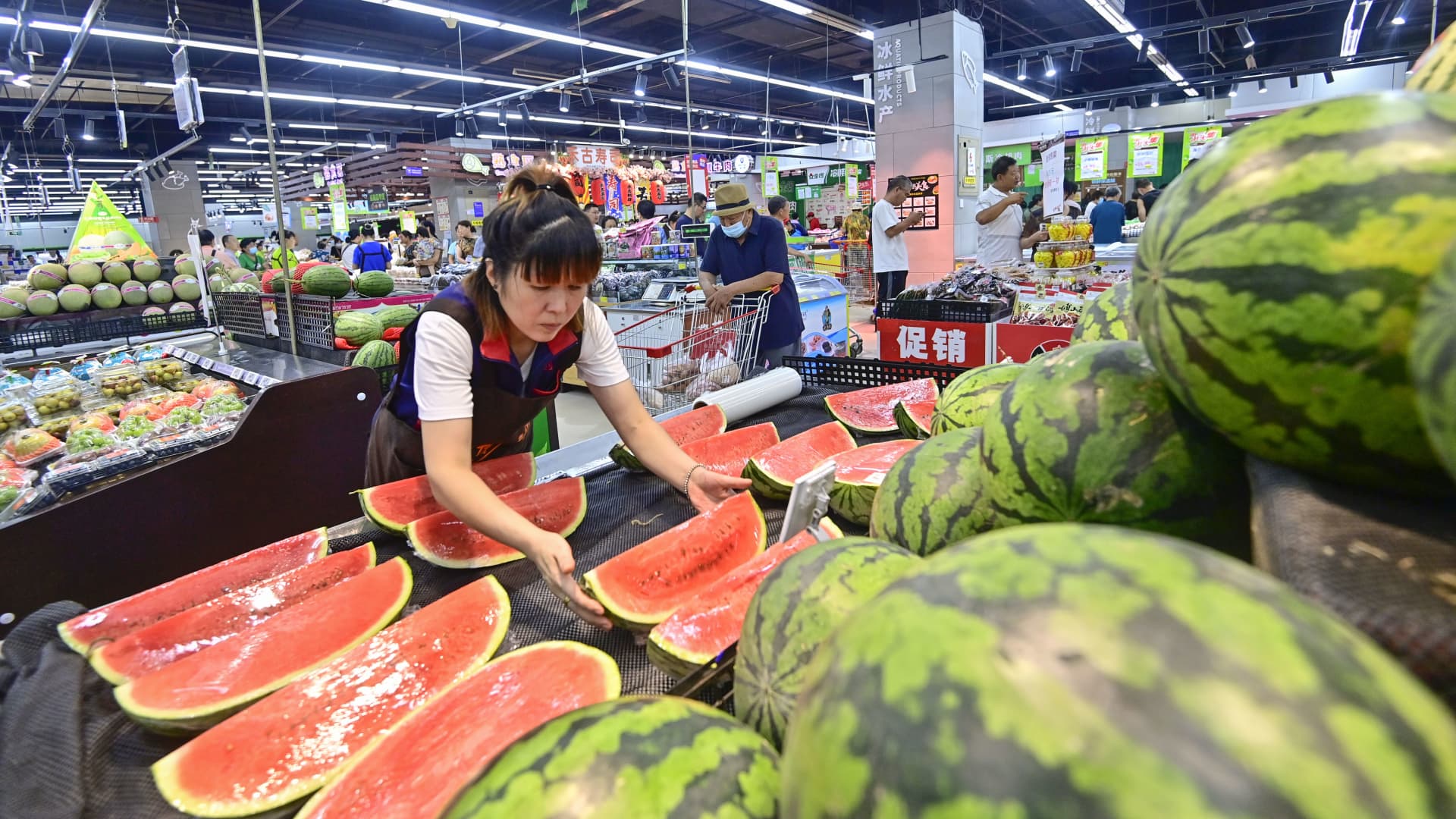China’s deflationary puzzle has become a critical economic conundrum, with its Producer Price Index (PPI) consistently declining, signaling broader economic challenges. The country’s producer prices fell by 3.6% year-on-year in June, marking the steepest decline in nearly two years. This trend, which has persisted for over two years, raises serious concerns about the underlying health of the Chinese economy and its global implications.
The persistent decline in producer prices is not an isolated phenomenon but a symptom of deeper economic issues. Weak domestic demand is a primary driver, as Chinese consumers remain cautious due to concerns about job security, income prospects, or the overall economic outlook. This hesitancy translates into lower demand for goods, forcing producers to lower prices to attract buyers. The situation is exacerbated by global economic uncertainties, including ongoing trade tensions with the U.S. and weakening demand from other major economies. These factors disrupt supply chains and contribute to lower export volumes, further pressuring Chinese producers.
Industrial overcapacity is another significant contributor to the deflationary trend. Years of rapid industrial expansion have led to an excess supply of goods in several sectors, resulting in fierce competition and downward pressure on prices. The “deepening price war” among companies to maintain market share, even at the expense of profitability, underscores the severity of the situation. Additionally, seasonal factors, such as fluctuations in energy demand, can contribute to temporary price declines, although the broader economic forces are more influential in the current context.
The low-interest-rate environment in China also plays a role in the deflationary pressures. While other major economies have aggressively hiked interest rates to combat inflation, China has maintained a relatively low-interest-rate environment. This divergence, intended to support domestic growth, can inadvertently contribute to deflationary pressures by making it cheaper for producers to borrow and potentially overproduce. The combination of these factors creates a complex web of challenges that policymakers must navigate carefully.
The decline in producer prices has broader implications for the Chinese economy. Corporate profitability is squeezed as profit margins shrink, leading to reduced investment, job cuts, and even bankruptcies. This, in turn, dampens economic activity and exacerbates the deflationary spiral. The increased real burden of debt due to falling prices makes it harder for businesses to repay their loans, posing risks to the financial system. Consumers, initially benefiting from lower prices, may postpone purchases in anticipation of even lower prices in the future, leading to a vicious cycle of falling demand and prices.
Addressing China’s deflationary pressures requires a multi-pronged approach. Stimulating domestic demand is crucial, and this could involve targeted tax cuts, increased social safety net spending, and measures to address income inequality. Tackling industrial overcapacity is also essential, which may involve encouraging consolidation in key sectors, phasing out inefficient producers, and promoting innovation and diversification. Monetary policy adjustments, such as lowering interest rates or injecting liquidity into the financial system, may be necessary but must be carefully calibrated to avoid unintended consequences. Structural reforms, including addressing distortions in land markets, restrictions on labor mobility, and barriers to entry for private firms, can improve resource allocation and boost productivity growth.
However, implementing these policies is not without challenges. Stimulating domestic demand may require difficult trade-offs, such as increasing government debt or addressing structural inequalities. Addressing overcapacity could lead to job losses and social unrest. Monetary policy adjustments need to be mindful of the potential risks of excessive credit growth. Structural reforms may face resistance from vested interests. International cooperation is also vital, as resolving trade disputes can reduce uncertainty and boost global demand, benefiting China’s export sector.
China’s deflationary pressures have global implications. As a major exporter, China’s deflation can transmit deflationary impulses to other countries, particularly those that rely heavily on Chinese goods. This can put pressure on central banks around the world to maintain accommodative monetary policies, potentially fueling asset bubbles and other financial risks. Furthermore, China’s economic slowdown can weigh on global growth, as the country is a key engine of global demand. A weaker Chinese economy can dampen demand for goods and services from other countries, particularly those that export raw materials and intermediate goods to China.
In conclusion, China’s deflationary challenge is complex and multifaceted, reflecting a combination of weak domestic demand, global economic headwinds, industrial overcapacity, and structural issues. Addressing this challenge requires a comprehensive and carefully calibrated policy response. The stakes are high, not just for China but for the global economy. Navigating these uncertain waters will require skillful policymaking, international cooperation, and a willingness to embrace bold reforms. The future of China’s economy, and to some extent the global economy, may well depend on it.

